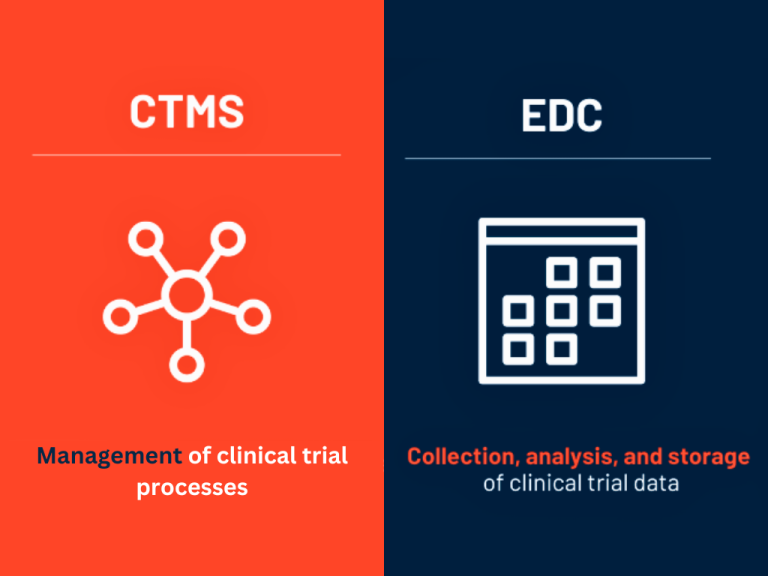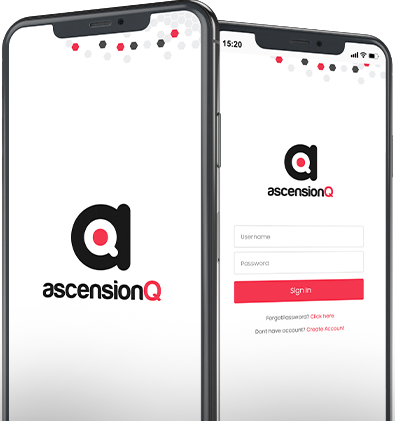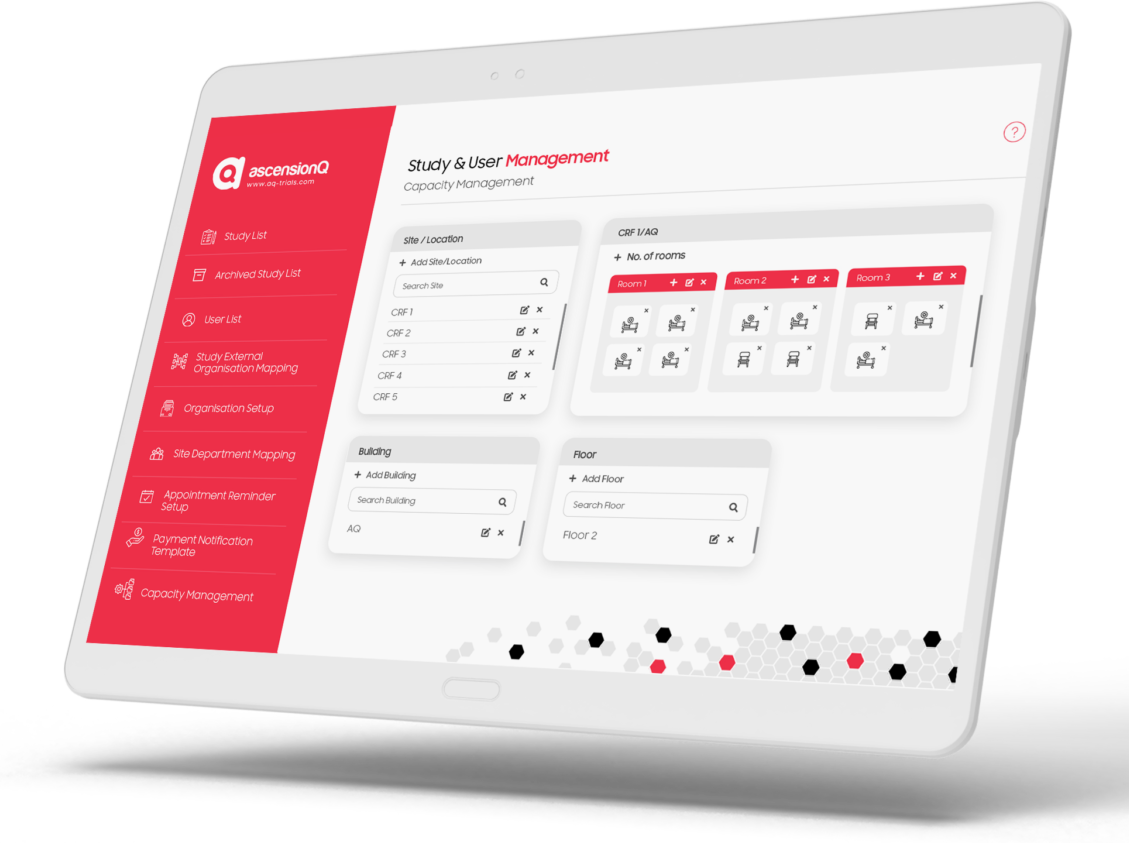CTMS VS EDC - What’s their Role and Difference in Clinical Research?
AQ

Clinical trial management systems (CTMS) and electronic data capture (EDC) software are designed to simplify and automate the intricate processes of clinical research. CTMS focuses on the management and coordination of the trial’s administrative aspect — whereas EDC software is dedicated to the collection and management of patient data. Both serve different but complementary roles, ensuring efficiency, accuracy, and success.
Let’s study in detail what is the difference between CTMS and EDC.
Aspect | Clinical Trial Management System (CTMS) | Electronic Data Capture (EDC) |
Primary Focus | Operational and administrative aspects of clinical trials. | Collection, validation, and management of clinical data. |
Data Types Managed | Operational and administrative data related to trial management. | Clinical data, including patient records, laboratory results, and adverse event reports. |
Integration Capabilities | Can integrate with EDC and other systems to streamline overall trial management. | Designed to integrate with CTMS and other tools for efficient data flow and reporting. |
Regulatory Compliance | Ensures compliance with regulatory requirements in operational aspects of clinical trials. | Designed with regulatory compliance in mind for data management, security, and integrity. |
Market Value and Growth | Valued at $1.1 billion in 2020, expected to reach $2.1 billion by 2027, with a CAGR of 12.2% (Global Market Insights). | Projected to reach $3.66 billion by 2027, with a CAGR of 13.1% from 2020 (Grand View Research). |
Adoption Rates | 97% of clinical research organizations and 85% of sponsors used CTMS in 2021 (Veeva Systems). | Adoption rates exceeding 60% in the United States (Journal of Clinical Research Best Practices). |
Clinical Trial Management System (CTMS)
CTMS, when built with a high-end technology stack, helps to proactively manage the operational aspects of clinical trials. It centralizes everything, ensuring that clinical trials are conducted efficiently, within budget, and in compliance with regulatory requirements. It provides real-time insights into trial progress and facilitates better decision-making all the way long.
The key functions of a CTMS include the following:
- Patient recruitment and enrollment tracking
- Site management and monitoring
- Budget and financial management
- Regulatory compliance and documentation
- Investigator and site performance tracking
- Protocol management
- Document and study milestone tracking
- Data integration with other systems
- Site feasibility and planning
- Adverse event and safety reporting
- Inventory management (for investigational products)
- Communication and collaboration tools
- Real-time reporting and analytics
Electronic Data Capture (EDC)
EDC is a clinical research software system used for collecting, validating, and managing clinical trial data electronically. It is primarily focused on ensuring error-free, faster data collection and analysis, which is a critical component of clinical trials. It also facilitates remote data capture, making it easier for investigators and patients to participate in trials.
The key functions of a future-proof EDC include the following:
- Digital data collection from various sources, such as case report forms (CRFs)
- Real-time data entry, data validation, and data cleaning
- Secure data storage and management
- Electronic patient diaries and data capture from medical devices
- Audit trail and data quality control
CTMS VS EDC: Which is Right For You?
When deciding between Clinical Trial Management Systems (CTMS) and Electronic Data Capture (EDC) systems, it’s essential to consider the specific needs of your trial.
CTMS is your go-to solution when you need to manage the operational and administrative aspects of a clinical trial, whereas EDC is the right choice when your primary focus is on data collection and management.
There’s also a third and better option to consider: CTMS with integrated EDC systems. These solutions combine the capabilities of both CTMS and EDC into a single platform. They streamline the entire clinical trial management process, simplifying it by providing a comprehensive solution for administrative and data-related tasks. This means you can use the integrated platform for not only trial management but also data collection, data entry, data validation, and sometimes data analysis.
The integration of EDC features into CTMS can be particularly beneficial for organizations looking to reduce the complexity of managing multiple software solutions and enhance the efficiency of their clinical trial processes.
Ultimately, the decision should align with your clinical trial’s specific needs.
You may schedule a consultation call with the AQ Trials Team, as we can help you make an informed decision.
Related Articles
Industry Discussions
The Importance of Volunteer Engagement and Its Impact on Retention in Clinical Trials
Volunteer engagement plays a vital role in the success of clinical trials. It encompasses the active involvement, motivation, and satisfaction of participants throughout the study duration. Retaining volunteers is crucial for the completion of trials and the generation of reliable data…
AQ Platform Updates
Accelerating Clinical Trials
In the fast-paced world of clinical research, time, efficiency, and cost-effectiveness are paramount. To meet these demands, the adoption of electronic systems, such as the Electronic Investigator Site File (eISF), has transformed the way clinical trials are conducted. In this blog, we will explore how eISF saves money, improves efficiency, enhances safety, and accelerates the pace of clinical trials.






